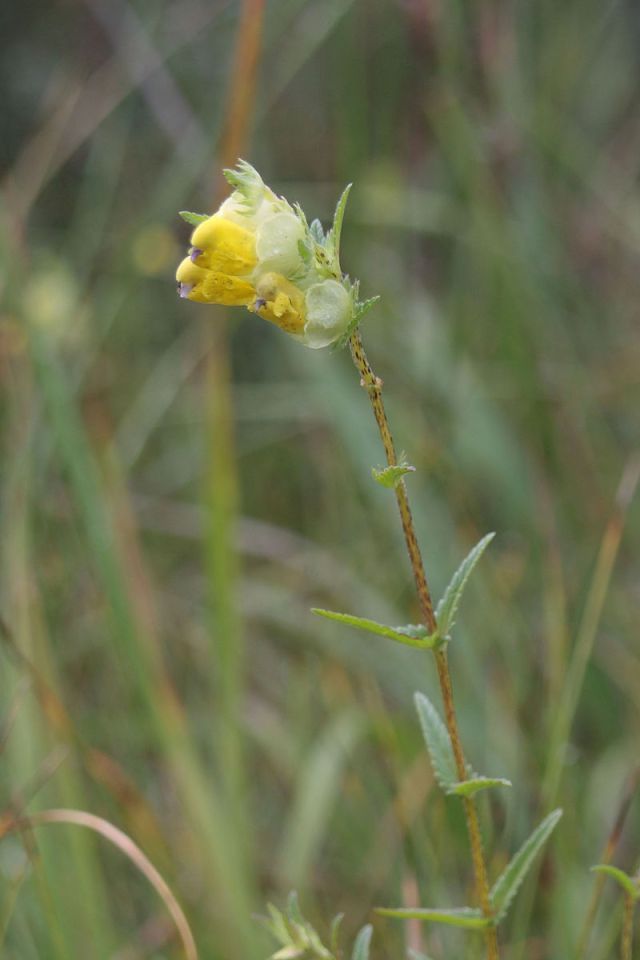Text by Tsipe Aavik
Saaremaa yellow rattle (Rhinanthus osiliensis) is the only endemic species of the island of Saaremaa, Estonia. This rare insect-pollinated plant prefers to grow in calcareous spring fens, which are naturally relatively rare and have largely disappeared due to severe land use change during the last century. These changes included extensive drainage of wetlands and consequent overgrowth of former fens with trees and bushes. Such landscape changes may have serious impact on the persistence of species growing in these habitats. For example, habitat loss is often accompanied by reduced population size, which has detrimental effects on the genetic diversity of plant populations. This, in turn, reduces the fitness of plants. Furthermore, at landscape scale, populations become isolated and are separated by hostile habitats, which may jeopardize the exchange of genes via pollen and seed flow between these populations. Lack of gene flow may further contribute to the extinction vortex of species endangered by habitat fragmentation.
We examined the effects of current landscape composition and landscape change during the last century on the genetic diversity of the endemic R. osiliensis. The study revealed that all examined populations of this rare species have recently experienced a severe bottleneck, i.e. a strong decline in population size. Furthermore, most populations suffered from high levels of inbreeding. These findings most likely reflect the consequences of the loss of the preferred habitats of R. osiliensis. We also found that a higher proportion of forests surrounding the populations caused a notable decrease in the genetic diversity within these populations.
Our study demonstrated that, most likely because of habitat fragmentation, rare species, such as the endemic R. osiliensis, are facing serious genetic consequences. To effectively organize the management of species endangered by fragmentation, it is important to keep in mind that in addition to the area and connectivity of suitable habitats, dispersal and pollen flow between populations is largely affected by the characteristics of the landscape matrix between suitable habitats.
Citation: Aavik, T., Talve, T., Thetloff, M., Uuemaa, E., Oja, T. (2017) Genetic consequences of landscape change for rare endemic plants – A case study of Rhinanthus osiliensis. Biological Conservation 210: 125-135. (link to full text)

Rhinanthus osiliensis (pic from here)
Abstract:
During the last hundred years European landscapes have experienced an extensive change in structure including a substantial loss of wetland habitats. In the current study we examined the influence of landscape change and current landscape composition on the genetic diversity of Rhinanthus osiliensis, a very rare endemic plant with narrow distribution range restricted to calcareous spring and species-rich fens in western part of the island of Saaremaa, Estonia. We observed very high inbreeding in some study populations of R. osiliensis. Furthermore, bottleneck analysis revealed that in fact all examined populations had experienced a severe decline in population size in the recent past. This result indicates that the high levels of inbreeding in R. osiliensis are not only the consequence of the mixed mating system common in this species, but may at least partly be attributed to habitat loss. Indeed, the analysis of landscape change revealed a substantial decrease in the area of mires during the last century in all study landscapes. Unexpectedly, current habitat availability did not influence the measures of genetic diversity. Nevertheless, the allelic richness of R. osiliensis was negatively affected by the amount of forests, which may have acted as a barrier for pollen flow in this insect-pollinated plant. We conclude that the populations of habitat-specialist rare plants such as R. osiliensis are endangered not only by the loss of habitats but also by other changes in landscape composition, e.g. afforestation, leading to strong declines in population size accompanied by genetic bottlenecks, decreased genetic diversity and high inbreeding

